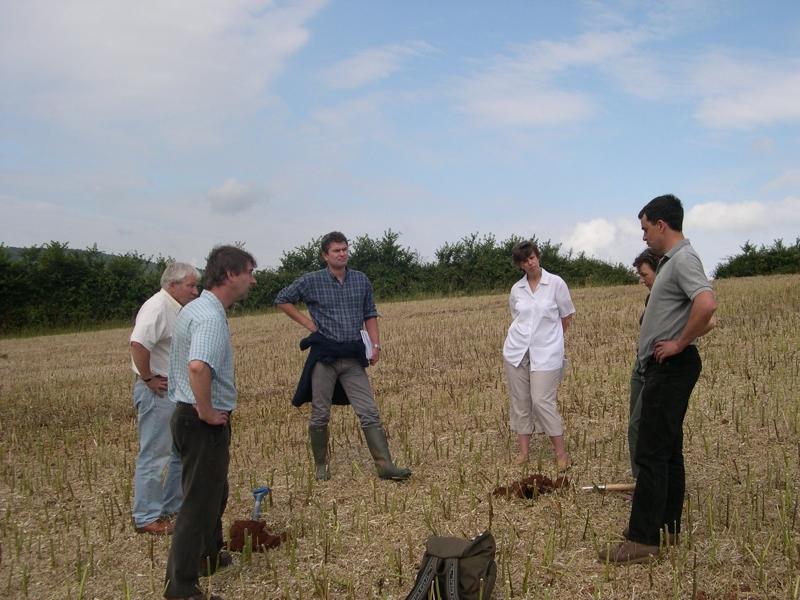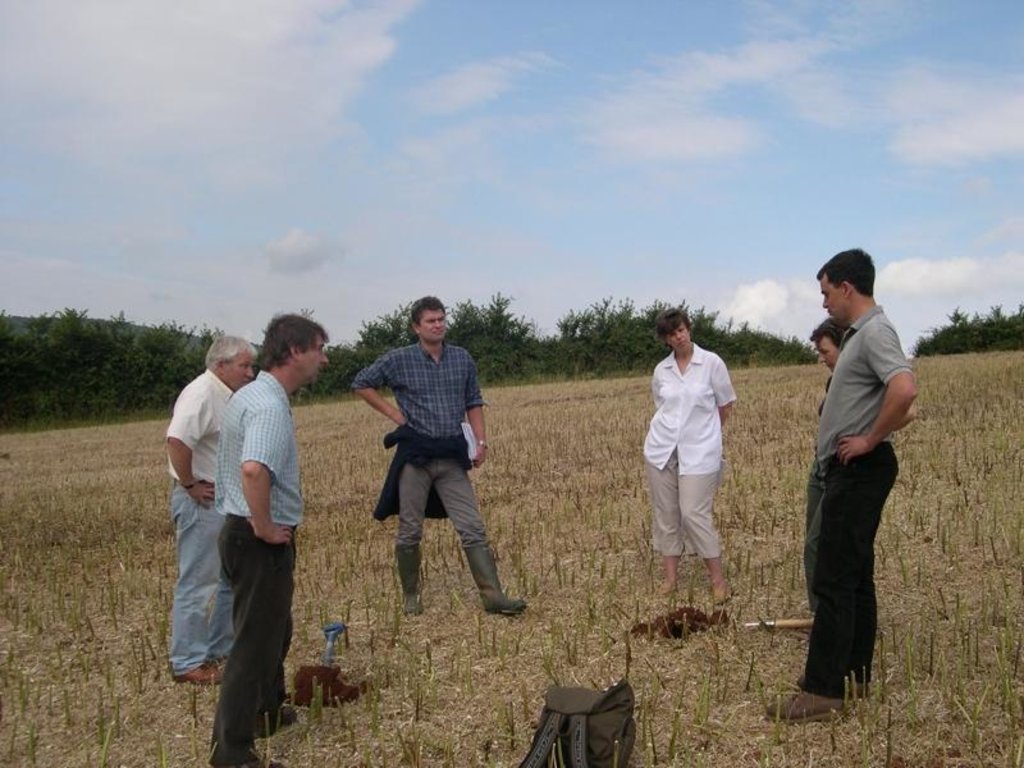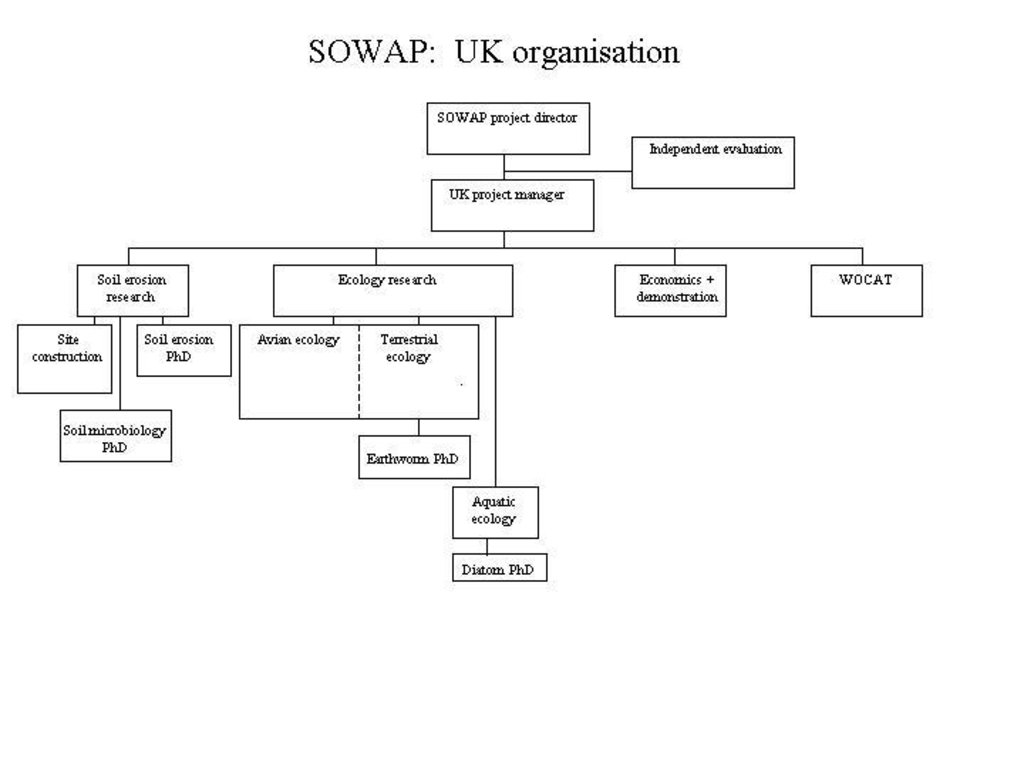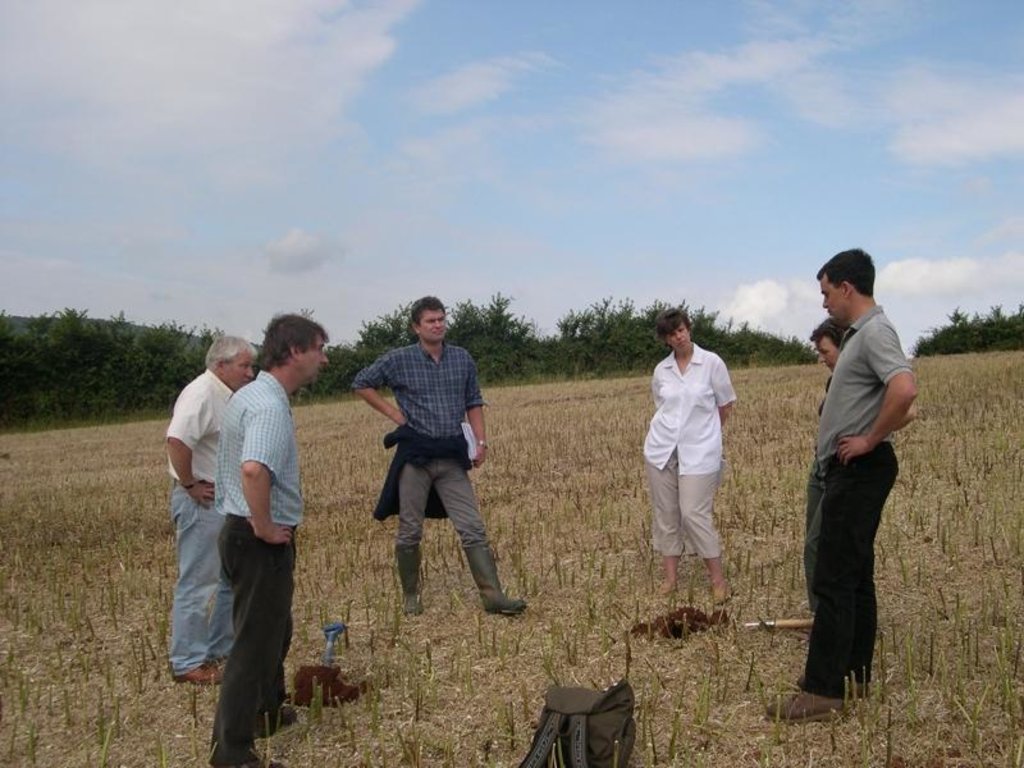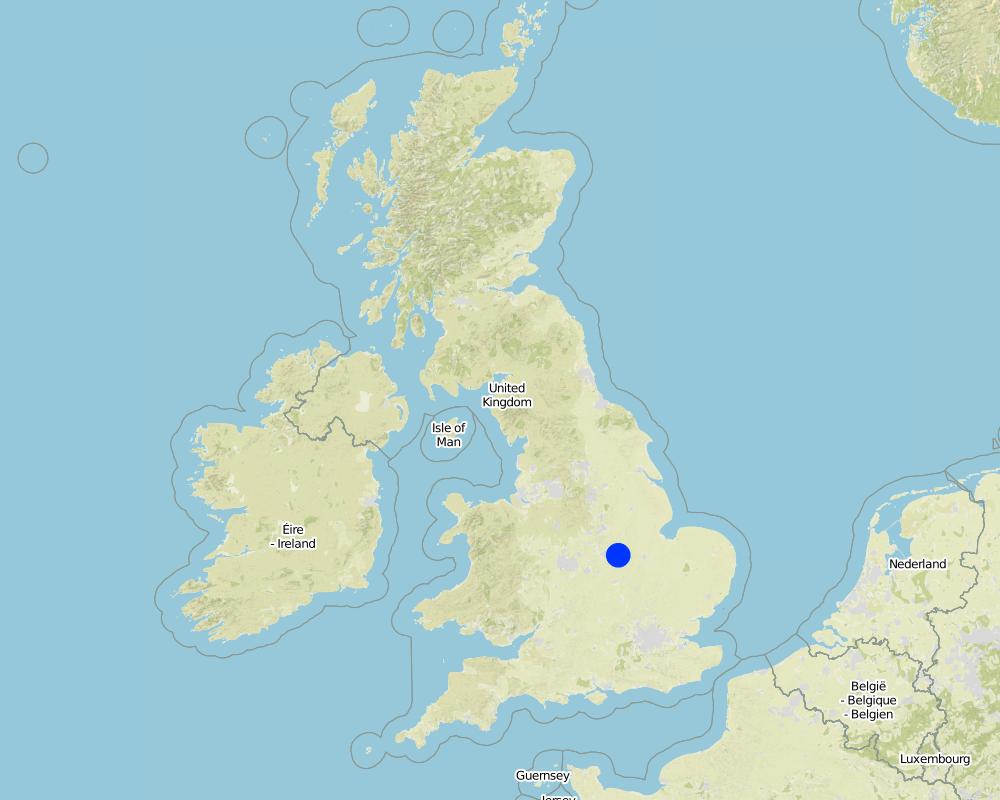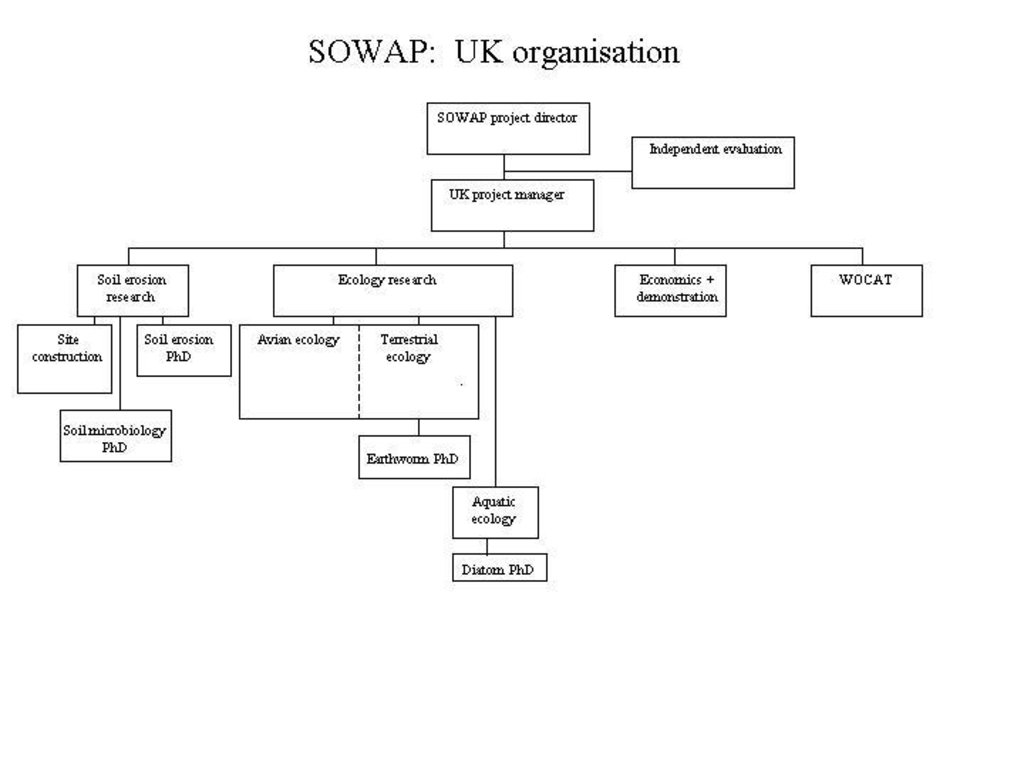Participatory on-farm resarch and demonstration in UK arable cropping [United Kingdom]
- Creation:
- Update:
- Compiler: Ceris A. Jones
- Editor: –
- Reviewer: Fabian Ottiger
approaches_2547 - United Kingdom
View sections
Expand all Collapse all1. General information
1.2 Contact details of resource persons and institutions involved in the assessment and documentation of the Approach
Name of the institution(s) which facilitated the documentation/ evaluation of the Approach (if relevant)
SOWAP (SOWAP) - Hungary1.3 Conditions regarding the use of data documented through WOCAT
The compiler and key resource person(s) accept the conditions regarding the use of data documented through WOCAT:
Yes
1.4 Reference(s) to Questionnaire(s) on SLM Technologies
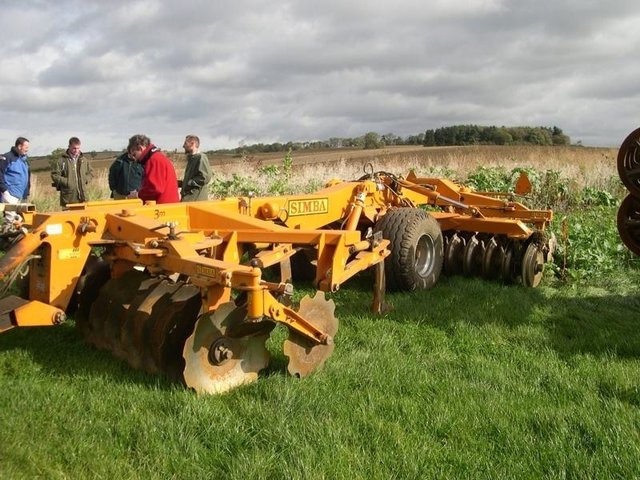
Conservation tillage in UK arable cropping: Loddington [United Kingdom]
Surface cultivation of up to the top 10cm of soil but not complete inversion
- Compiler: Ceris A. Jones
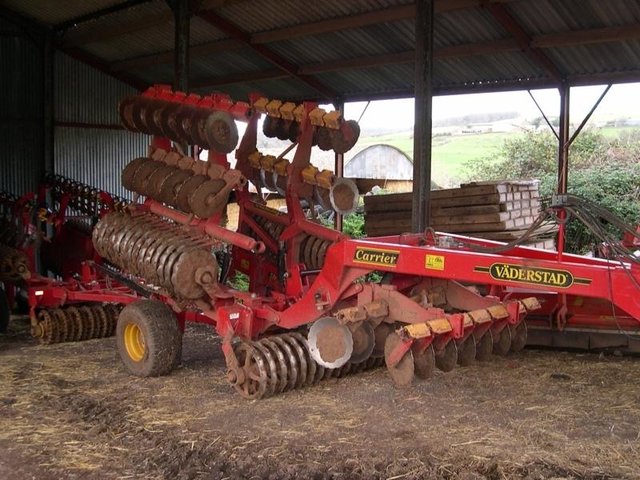
Conservation tillage in UK arable cropping systems: Tivington [United Kingdom]
Surface cultivation of up to the top 10cm of soil but not complete inversion
- Compiler: Ceris A. Jones
2. Description of the SLM Approach
2.1 Short description of the Approach
To find and demonstrate ways of better managing the land.
2.2 Detailed description of the Approach
Detailed description of the Approach:
Aims / objectives: Objectives: to improve soil management, reduce soil erosion; to reduce water pollution; to enable farmer to maintain the economic viability of his operations; to disseminate project results; to engage with stakeholders; to encourage farmers to adopt the technology.
Methods: Presentation of technical and economic data; frequent discussions and field visits with farmers and their advisors, use of all dissemination options (opendays, presentations, agricultural press, radio, television).
Stages of implementation: Consultation bewteen project members and land manager on management practice; regular project meetings; collaboration with other organisations.
Role of stakeholders: Use of project experience to solve problems and set up appropriate trials, communication with various stakeholders.
2.3 Photos of the Approach
2.5 Country/ region/ locations where the Approach has been applied
Country:
United Kingdom
Region/ State/ Province:
Leicestershire and Somerset
Map
×2.6 Dates of initiation and termination of the Approach
Indicate year of initiation:
2003
Year of termination (if Approach is no longer applied):
2006
2.7 Type of Approach
- project/ programme based
2.8 Main aims/ objectives of the Approach
The Approach focused mainly on SLM with other activities (soil quality, water quality, speed and cost of crop establishment, biodiversity)
To find and demonstrate ways of better managing the land. To demonstrate the viability and effectiveness of conservation oriented arable land management systems in protecting soil resources, improving catchment water quality and promoting biodiversity. To provide demonstrations of best practice in soil management for local farmers To provide practical field solutions to demonstrate sustainable farming practices to policy makers To demonstrate how information can be disseminated successfully at the local, regional, national and EU level via workshops, field visits, publications and the Internet.
The SLM Approach addressed the following problems: Social: Insufficient awareness of environmental benefits of SWC and incoming regulation (eg CAP reform, Water Framework Directive), low level of confidence to try new techniques, getting farmers to own their (erosion) problem. Technical: link changes in soil management with effects on water quality and biodiversity
2.9 Conditions enabling or hindering implementation of the Technology/ Technologies applied under the Approach
social/ cultural/ religious norms and values
- hindering
traditional conservatism, perceptions, pride in a 'tidy' field
Treatment through the SLM Approach: discussion and demonstration
availability/ access to financial resources and services
- hindering
purchasing of appropriate equipment
Treatment through the SLM Approach: sourcing finance and creating business structure to justify expense; use of cost-benefit analysis information
legal framework (land tenure, land and water use rights)
- enabling
The existing land ownership, land use rights / water rights helped a little the approach implementation: The Allerton Trust's objectives are to be economically viable while practising good environmental management
knowledge about SLM, access to technical support
- hindering
dealing with trash and weed management; conflicting advice from many sources
Treatment through the SLM Approach: sharing risks and responsibility; input of expertise
3. Participation and roles of stakeholders involved
3.1 Stakeholders involved in the Approach and their roles
- local land users/ local communities
Working land users were mainly men (This is a single farm but the farmer now co-farms with a neighbour)
- SLM specialists/ agricultural advisers
- teachers/ school children/ students
- NGO
One national non-goverment (SMI)
- national government (planners, decision-makers)
- international organization
3.2 Involvement of local land users/ local communities in the different phases of the Approach
| Involvement of local land users/ local communities | Specify who was involved and describe activities | |
|---|---|---|
| initiation/ motivation | none | |
| planning | none | |
| implementation | none | |
| monitoring/ evaluation | none | |
| Research | none |
3.3 Flow chart (if available)
3.4 Decision-making on the selection of SLM Technology/ Technologies
Specify who decided on the selection of the Technology/ Technologies to be implemented:
- mainly land users, supported by SLM specialists
Explain:
On-farm discussion with project team members, the land manager and other experts.
Decisions on the method of implementing the SLM Technology were made by mainly by SLM specialists with consultation of land users. Land manager needed to be comfortable with the decisions made
4. Technical support, capacity building, and knowledge management
4.1 Capacity building/ training
Was training provided to land users/ other stakeholders?
Yes
Specify who was trained:
- land users
- politicians/decision makers (1), agronomists (2),
Form of training:
- on-the-job
- farmer-to-farmer
- demonstration areas
- public meetings
- courses
Form of training:
- public meetings (1)
4.3 Institution strengthening (organizational development)
Have institutions been established or strengthened through the Approach?
- no
4.4 Monitoring and evaluation
Is monitoring and evaluation part of the Approach?
Yes
Comments:
bio-physical aspects were ad hoc monitored through observations
technical aspects were regular monitored through measurements
economic / production aspects were regular monitored through measurements
no. of land users involved aspects were regular monitored through measurements
management of Approach aspects were ad hoc monitored through measurements
There were no changes in the Approach as a result of monitoring and evaluation
4.5 Research
Was research part of the Approach?
Yes
Specify topics:
- ecology
Give further details and indicate who did the research:
Yields and gross margins; effects on biodiversity especially birds; rate of technology uptake
Research was carried out on-farm
5. Financing and external material support
5.1 Annual budget for the SLM component of the Approach
Comments (e.g. main sources of funding/ major donors):
Approach costs were met by the following donors: international (EU-LIFE Environment/Syngenta): 100.0%
5.2 Financial/ material support provided to land users
Did land users receive financial/ material support for implementing the Technology/ Technologies?
No
5.3 Subsidies for specific inputs (including labour)
If labour by land users was a substantial input, was it:
- voluntary
5.4 Credit
Was credit provided under the Approach for SLM activities?
No
6. Impact analysis and concluding statements
6.1 Impacts of the Approach
Did the Approach help land users to implement and maintain SLM Technologies?
- No
- Yes, little
- Yes, moderately
- Yes, greatly
Soil and water management improved indirectly through the adoption of non-inversion tillage driven by the need to improve farm economics
Did other land users / projects adopt the Approach?
- No
- Yes, little
- Yes, moderately
- Yes, greatly
6.3 Sustainability of Approach activities
Can the land users sustain what has been implemented through the Approach (without external support)?
- uncertain
If no or uncertain, specify and comment:
Technical difficulties that may arise e.g. weed management, soil compaction, will require expert input and expertise from different areas
6.4 Strengths/ advantages of the Approach
| Strengths/ advantages/ opportunities in the land user’s view |
|---|
| greater confidence |
| Strengths/ advantages/ opportunities in the compiler’s or other key resource person’s view |
|---|
| improved motivation (How to sustain/ enhance this strength: continued support, technical advice and recognition of farmer's achievement) |
| improved education and awareness (How to sustain/ enhance this strength: continued support, technical advice and recognition of farmer's achievement) |
| greater confidence |
| improved problem solving capabilities |
6.5 Weaknesses/ disadvantages of the Approach and ways of overcoming them
| Weaknesses/ disadvantages/ risks in the compiler’s or other key resource person’s view | How can they be overcome? |
|---|---|
| dependent on personalities I.e. with a more conservative farmer, this approach would be unsuccessful |
7. References and links
7.1 Methods/ sources of information
- field visits, field surveys
- interviews with land users
Links and modules
Expand all Collapse allLinks

Conservation tillage in UK arable cropping: Loddington [United Kingdom]
Surface cultivation of up to the top 10cm of soil but not complete inversion
- Compiler: Ceris A. Jones

Conservation tillage in UK arable cropping systems: Tivington [United Kingdom]
Surface cultivation of up to the top 10cm of soil but not complete inversion
- Compiler: Ceris A. Jones
Modules
No modules


